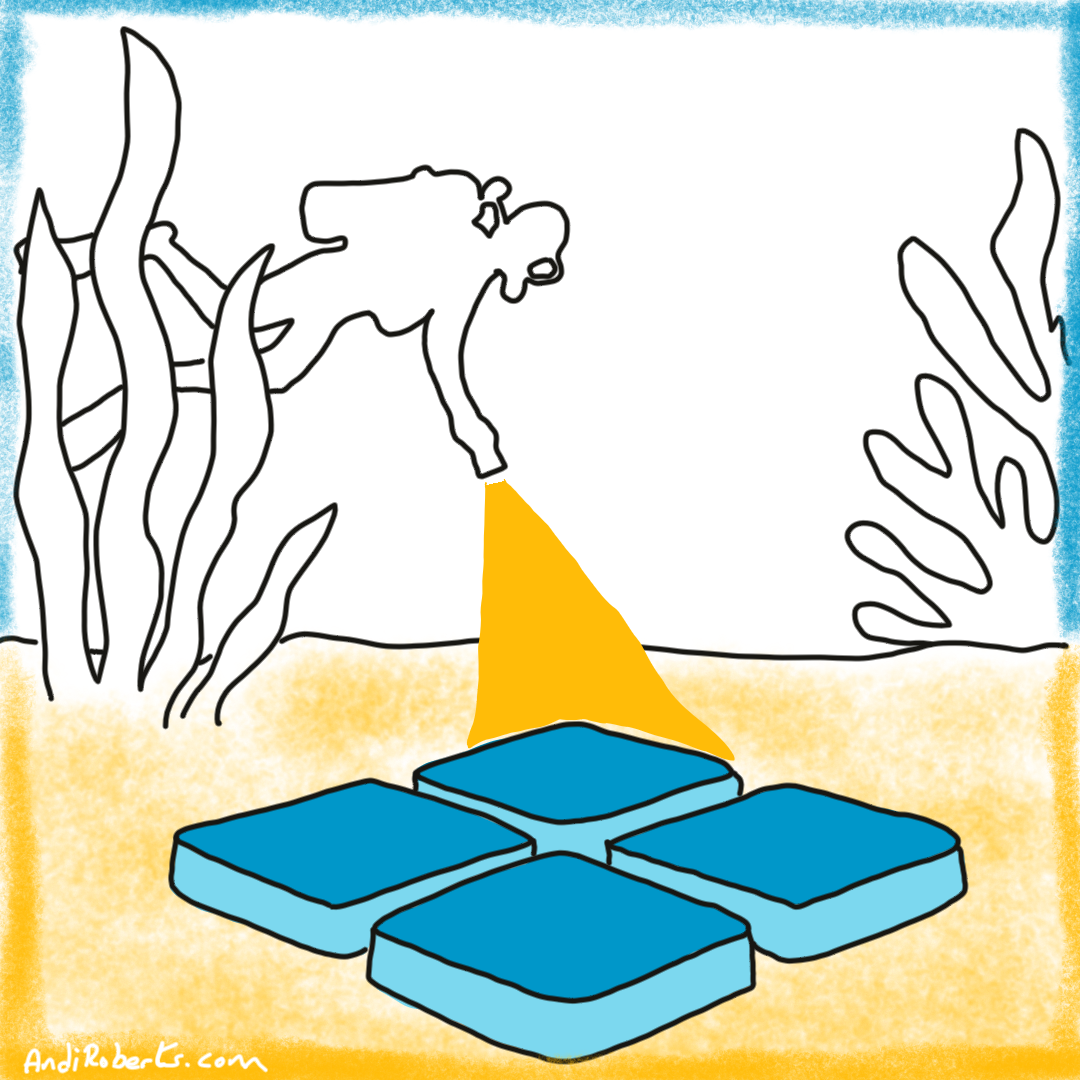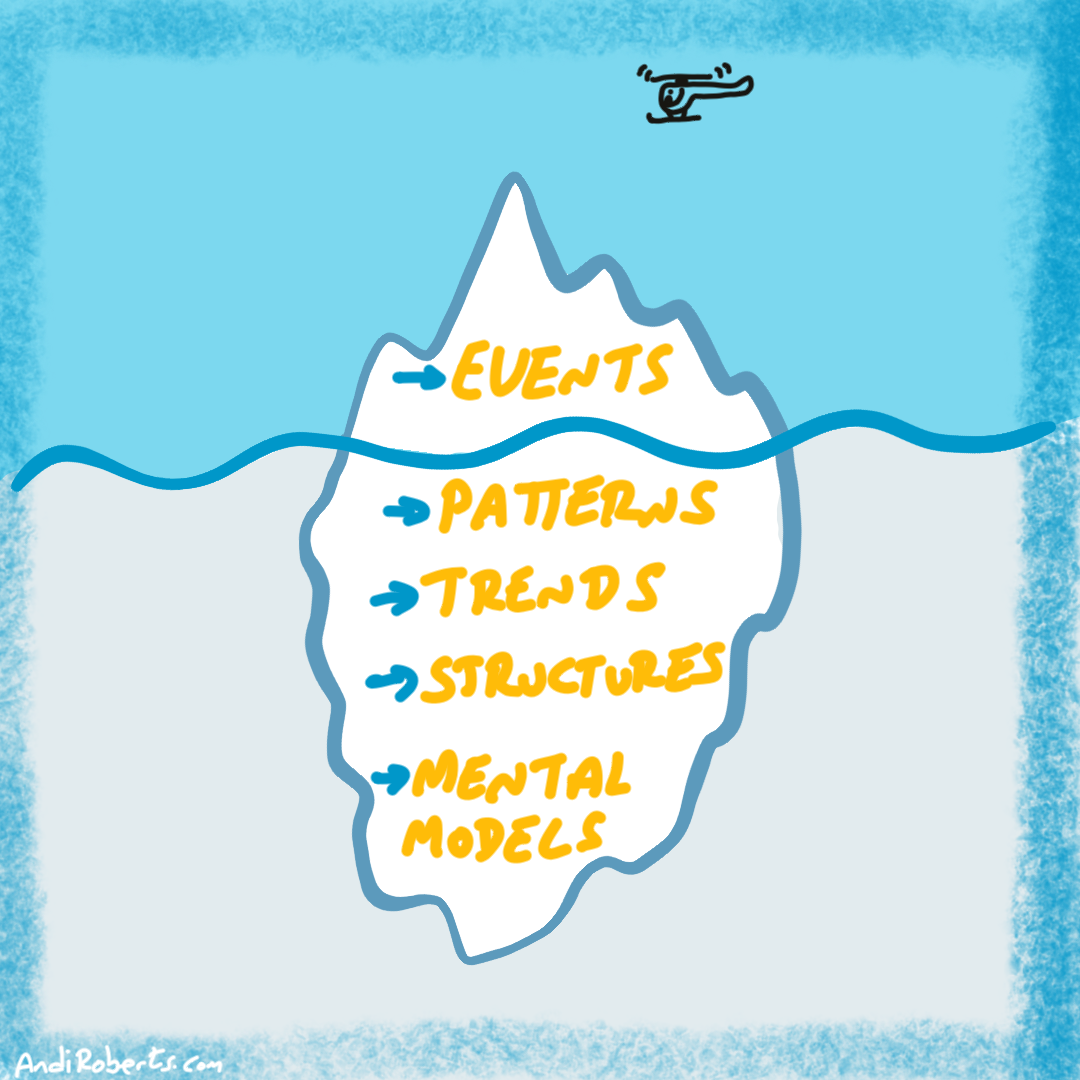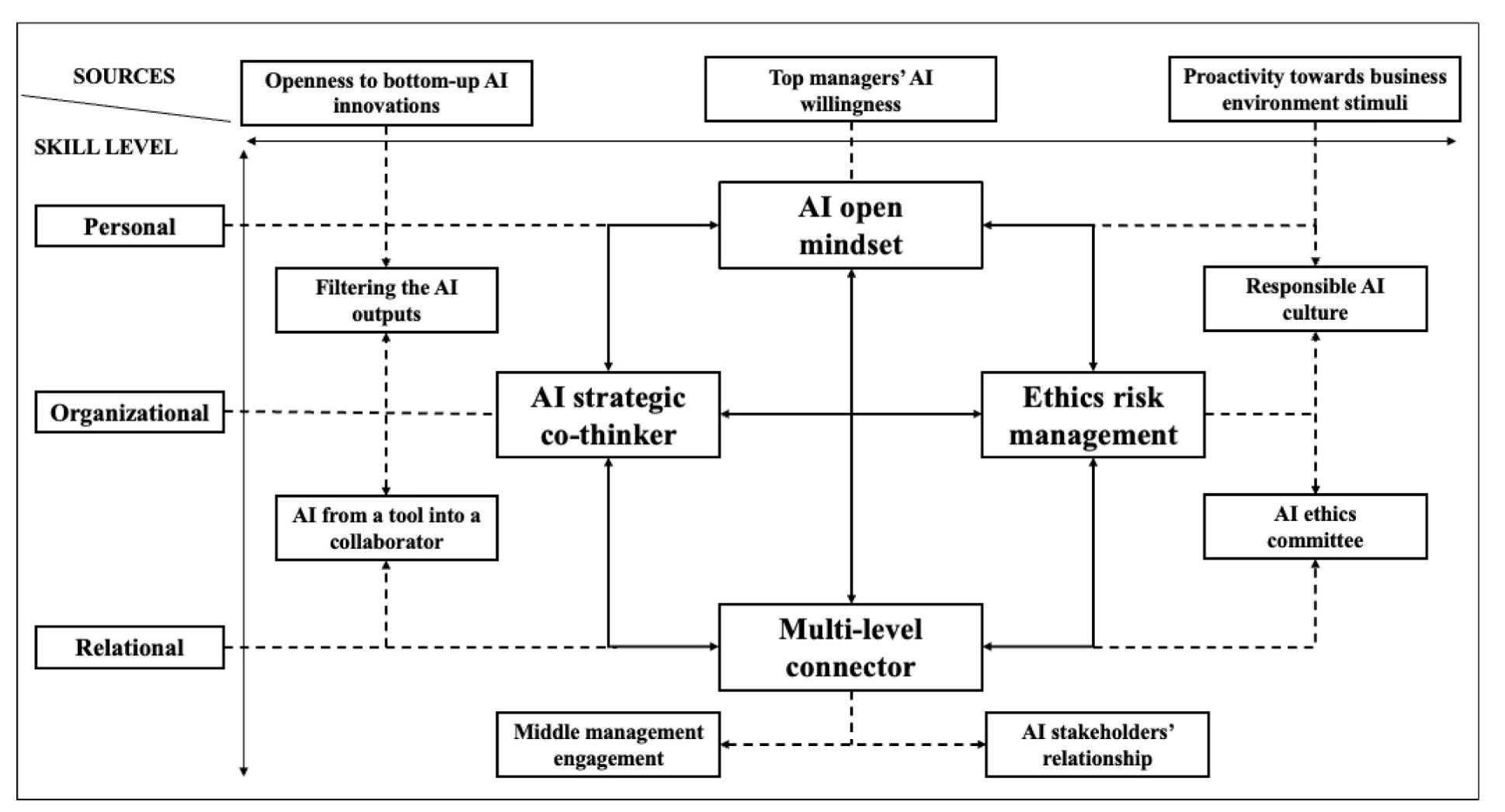Few team models have captured leaders’ imagination like The Five Dysfunctions of a Team. (Years ago, I was even a tester of the training materials for Wiley, the publisher.) It is simple, memorable, and shaped like something that promises order. The pyramid gives us a sense of sequence and stability. It tells a neat story: first build trust, then embrace conflict, commit, hold one another accountable, and finally deliver results. It feels intuitive.
The model’s appeal is emotional as much as intellectual. It gives language to things leaders recognise but often cannot name. Most people have lived through teams lacking trust or avoiding conflict. The words resonate. The framework seems to offer not only diagnosis but cure. Its visual form is elegant. Its logic is reassuring. And because it is based on story rather than statistics, it is easy to teach and remember.
For busy leaders, this clarity is seductive. It offers a ladder to climb, a sense that if we just fix the first dysfunction, the rest will follow. The book’s fable makes it accessible to every level of management. It turns the complex work of human collaboration into a sequence of manageable tasks.
But this is precisely where the model fails. Teams are not mechanical systems; they are living social systems. What makes The Five Dysfunctions appealing is also what makes it misleading. It presents relational life as a chain of dependencies rather than a web of mutual influence. It turns the team into an object to be repaired instead of a community to be deepened.
The pyramid invites leaders to act as mechanics rather than participants. Trust becomes a problem to be solved rather than a quality to be nurtured. Conflict becomes something to manage rather than explore. Accountability becomes a mechanism of control rather than an act of care. The simplicity that first draws us in ends up flattening the very complexity that makes teams human.
The model’s language also frames teamwork as deficiency. It begins with “absence,” “fear,” and “avoidance.” This reinforces a culture of problem-solving instead of possibility-making. When we begin with what is missing, we become diagnosticians of dysfunction rather than stewards of potential.
The reason Lencioni’s model endures is because it names something real: the pain of disconnection. But it mistakes symptoms for structure. It assumes that dysfunctions are stages to overcome, rather than ongoing tensions to navigate. It treats trust and accountability as endpoints, when they are really expressions of belonging.
So yes, The Five Dysfunctions appeals because it gives leaders clarity and hope. But it misleads because it suggests that clarity and control are enough. Teams do not become healthy by mastering a sequence; they become healthy by staying in relationship.
Why Lencioni’s model does not work
The problem with The Five Dysfunctions of a Team is not that it is wrong, but that it is tidy. It names what is messy in human relationships and then packages it as a sequence. Trust, conflict, commitment, accountability, results. One stacked upon another, as if teams could be fixed like a broken ladder.
But people do not live in pyramids. We live in circles. We live in the ebb and flow of belonging, in the unspoken agreements we hold about how much of ourselves we will bring to the room. Lencioni’s model gives us a staircase to climb. What we need is a place to gather.
His five dysfunctions tell us what is missing, but not what is present. They start from deficit. Absence of trust. Fear of conflict. The language is that of pathology. It begins with what is wrong with us. It invites leaders to diagnose rather than to connect. And once you begin diagnosing, you are already standing apart from the team, looking down at it, as if you were not part of the system you seek to heal.
The pyramid also assumes sequence. That we can repair one thing before moving to the next. But community is not linear. Trust does not precede conflict, nor does accountability follow commitment. In real life, they coexist in tension. We build trust by entering conflict. We commit by holding one another accountable. We learn by failing at all of these, not by mastering them in order.
Lencioni gives us a map of dysfunction. What we need is a practice of wholeness. A team becomes strong not when it avoids dysfunction but when it tells the truth about it together. What matters is the quality of the conversation, not the shape of the model. The courage to stay in dialogue when things get rough is what transforms a group of individuals into a community.
There is also a hidden message in his language: that leadership is about fixing people. The leader’s job, it seems, is to install trust, facilitate conflict, enforce accountability, to get others to behave. This managerial stance is precisely what fragments community. It turns the team into an object of control rather than a field of co-creation.
What if we began somewhere else? What if instead of diagnosing dysfunction, we asked:
-
What gifts are we each willing to bring?
-
What promise are we willing to make to one another?
-
What invitation might shift the story we are living?
These questions do not require a pyramid. They require presence. And they require faith, not the naive kind, but the kind that believes people already have what they need to create something together.
Lencioni’s model does not work, not because it is false, but because it is too neat for the truth. It describes teams as if they were mechanical. They are not. They are living systems.
The work is not to overcome dysfunction. The work is to reclaim our capacity for trust, dialogue, and shared accountability, not as steps, but as expressions of our belonging.
When we treat teams as communities, not problems, we discover that the so-called dysfunctions were never flaws at all. They were the invitations to become real, to stay in the room, and to do the human work together.
What actually builds community inside teams
Community does not come from technique. It comes from invitation. The act of asking, Will you join me?, is the architecture of belonging. When we talk about teams, we often rush toward fixing what is broken. We diagnose. We measure engagement. We build models. We call people “resources.” But the life of a team does not emerge from being managed. It emerges from being seen.
To build community inside a team is to create the conditions where people choose to care. That choice cannot be mandated, incentivised, or trained. It comes from conversation, the kind that matters, the kind that reaches beneath the surface of the task and touches the shared purpose beneath it.
Real teams are born from authentic invitation. Not the invitation to a meeting, but the invitation to meaning. The question is not “What do we have to do?” but “What do we want to create together that none of us can do alone?”
When leaders understand this, they stop trying to drive trust and start creating spaces for it to appear. Trust is not a programme. It is a by-product of respect, vulnerability, and consistency over time.
Conflict, too, changes shape in community. It is no longer something to resolve but something to explore. When we trust one another enough to stay in disagreement without withdrawing or winning, we begin to discover our shared intelligence. Conflict is not the enemy of unity; avoidance is.
Commitment grows when people have a voice in defining the promises they make. The promises that matter are not compliance agreements; they are personal declarations of ownership. A leader’s role is not to enforce these promises, but to witness them and to honour the courage it takes to make them.
Accountability becomes an act of care. It is what happens when we care enough about one another to speak the truth with kindness. It is a gift, not a punishment. In a real community, accountability is never hierarchical. It moves laterally, peer to peer, woven through conversation and relationship.
And results, the thing we all chase, arrive not as the product of pressure but as the consequence of connection. When people feel that their contribution matters to something larger than themselves, performance follows. The data is secondary to the belonging.
The paradox is this: when you stop trying to fix the dysfunctions, the team begins to heal. Because the healing does not come from solving. It comes from seeing. Seeing one another as human beings capable of generosity, fear, brilliance, and doubt.
So what actually builds community inside teams? Not frameworks or pyramids or bullet-point virtues. But a handful of practices, radical and straightforward at once:
-
Invitation instead of mandate: Ask people to join you in a future they help define.
-
Questions instead of answers: Lead with curiosity. What possibility are we standing for?
-
Gifts instead of deficiencies: Notice what each person brings that the team cannot do without.
-
Promises instead of roles: Let people name what they will give to the whole.
-
Stories instead of reports: Make room for meaning to live, not just metrics.
These are not management tools. They are human tools. They remind us that teams are not instruments of productivity; they are containers for relationship. The community we long for at work is not built by eliminating dysfunction. It is built by choosing connection. When we choose that, we no longer need a pyramid or a model to tell us how. We already know.
The living cycle of team effectiveness
Safety → Dialogue → Clarity → Accountability → Learning
Teams thrive not because they eliminate dysfunction, but because they cultivate rhythm. The rhythm of a healthy team is a cycle that moves continually between connection, exploration, alignment, responsibility, and renewal.
The Living Cycle of Team Effectiveness describes five interconnected conditions that sustain collective performance. The cycle begins with Safety, enabling open Dialogue, which generates Clarity, leading to shared Accountability, and culminating in continuous Learning. The process is circular, not hierarchical. Learning feeds back into renewed Safety, as trust deepens and the team’s capacity expands.
1. Safety: The ground for honest work
Psychological safety is the foundation of all effective collaboration. It is the shared belief that the team is a place where one can speak up, question, and admit mistakes without fear of blame or humiliation. Research by Amy Edmondson shows that teams high in psychological safety take more risks, learn faster, and perform better. Safety does not mean comfort; it means courage in the presence of mutual respect. When leaders demonstrate openness, humility, and consistency, they make it possible for the team to bring forward its collective intelligence.
Self-assessment questions
-
Do people on this team feel they can share half-formed ideas or doubts without being dismissed?
-
When errors occur, do we focus on learning or on finding fault?
-
How do we respond when someone challenges our assumptions?
Techniques and tools
-
Check-in Round – Begin meetings with brief personal or reflective check-ins, such as “What do I need to focus well today?” This builds connection and lowers social threat.
-
Team Agreements – Co-create a short, living document that defines how the team will behave in meetings, handle conflict, and give feedback. Teams that define their own norms build stronger trust.
-
Stop-Start-Continue Feedback – A simple structure that allows team members to exchange low-risk, constructive feedback. Each person identifies one behaviour to stop, one to start, and one to continue. It promotes candour while maintaining respect.
2. Dialogue: Turning talk into discovery
Dialogue is the art of thinking together. It is different from debate, where the goal is to persuade. Dialogue aims to explore. Chris Argyris and David Bohm describe dialogue as the practice of suspending assumptions and listening for collective meaning. In organisations, this capacity allows teams to surface unspoken tensions, test their thinking, and move from advocacy to inquiry. When dialogue is strong, disagreement becomes a creative resource rather than a source of division.
Self-assessment questions
-
Do we listen to understand, or do we listen to defend our position?
-
Are we able to stay in conversation when disagreement arises, or do we retreat?
-
Whose voices or perspectives are missing from our discussions?
Techniques and tools
-
Ladder of Inference (Chris Argyris) – A reflective model that helps people slow down their reasoning process by identifying how data, assumptions, and beliefs shape conclusions.
-
Dialogue Circles (David Bohm / Edgar Schein) – A structured conversation where participants speak in turn, listen without interruption, and inquire into what is emerging.
-
Active Listening Framework (Carl Rogers) – Training the team in active listening—restating, summarising, and validating what others say—creates psychological presence and prevents defensive interactions.
3. Clarity: Making meaning visible
Clarity gives direction to effort and purpose to action. Teams often lose momentum not because of poor relationships but because of ambiguity about what matters most. Clarity arises when people share a common understanding of purpose, roles, and outcomes. Richard Hackman’s research on team effectiveness emphasises that clear goals and roles are among the strongest predictors of performance. Clarity does not mean rigidity; it means coherence. When teams know where they are headed, they can adapt more confidently to change.
Self-assessment questions
-
Can everyone on this team explain our shared purpose in a way that would make sense to an outsider?
-
Do we have a clear understanding of how decisions are made and by whom?
-
Are we clear about how success will be measured and communicated?
Techniques and tools
-
Team Purpose Canvas – A one-page framework to define purpose, stakeholders, goals, and success criteria.
-
RACI or RAPID Decision Model – Simple frameworks for clarifying roles in decision-making.
-
Objectives and Key Results (OKRs) – A goal-setting framework that links strategic intent to measurable outcomes.
4. Accountability: Caring enough to tell the truth
Accountability is not about control; it is about commitment. Teams that hold one another accountable do so because they care about their shared promises and the integrity of their work. Accountability works best when it flows laterally rather than top-down. Peer accountability strengthens ownership and psychological safety. High-accountability teams are clear about expectations, track progress visibly, and have regular forums for truth-telling.
Self-assessment questions
-
Do we regularly review whether we have kept the commitments we made to one another?
-
How do we handle underperformance or missed expectations—early, directly, and constructively, or indirectly and with delay?
-
Do peers feel empowered to hold each other to account, or does accountability depend solely on hierarchy?
Techniques and tools
-
After-Action Reviews (AARs) – A structured process for discussing what was intended, what happened, why it happened, and what can be learned.
-
Peer Coaching Conversations – Colleagues pair up to discuss commitments and challenges in a confidential, supportive format.
-
Team Scorecards or Progress Boards – Shared dashboards that make commitments and progress visible, turning accountability into collective stewardship.
5. Learning: Turning experience into capability
Learning closes the loop in the cycle and feeds it back into Safety. Teams that learn together grow more resilient, self-aware, and adaptable. Learning involves both reflection and experimentation. Donald Schön called this “double-loop learning,” where teams not only correct errors but also question the assumptions that produced them. Learning ensures that experience becomes capability rather than repetition.
Self-assessment questions
-
How often do we pause to reflect on what we have learned before moving on to the next task?
-
When we succeed, do we understand why, or do we simply celebrate and move on?
-
When things go wrong, do we examine our assumptions or just change tactics?
Techniques and tools
-
Retrospectives (Agile Practice) – A recurring reflection after each project or sprint to discuss what went well, what did not, and what should change.
-
Learning Journals or Reflection Prompts – Encourage each team member to record insights and surprises after major meetings or projects.
-
Double-Loop Learning Review – Ask, “What assumptions led to our decisions?” and “What might we need to unlearn?” This turns learning into transformation.
The five conditions operate as a living system. Safety creates the space for Dialogue, Dialogue produces Clarity, Clarity enables Accountability, and Accountability leads to Learning. When a team integrates its learning, it deepens its sense of Safety and begins the cycle anew. Effective teams do not travel a straight line toward performance. They turn the wheel again and again, each time more attuned, more honest, and more capable of creating something greater together.
Conclusion: Returning to the circle
The real work of leadership is not to manage dysfunction but to cultivate belonging. Teams are not puzzles to be solved; they are living relationships that can learn, adapt, and renew themselves when given the right attention.
When a team stops seeing itself as a hierarchy of problems and begins to see itself as a community of promise, something shifts. Trust ceases to be a stage to complete. Conflict becomes a conversation worth staying in. Accountability turns into care. And learning stops being an activity at the end of the project and becomes the rhythm that keeps the team alive.
Models and frameworks have their place, but they are only helpful if they point us back to what is already possible in the room. The Living Cycle of Team Effectiveness does not demand that we fix anyone. It asks us to keep turning toward one another, to keep creating the conditions where honesty, clarity, and growth can flourish.
Community is not built by agreement or alignment alone. It is built by the shared act of showing up, speaking truthfully, and staying connected when things get real. Every time a team completes that cycl: safety, dialogue, clarity, accountability, learning, it strengthens its capacity to face uncertainty and create meaning together.
Leadership, then, becomes the practice of creating circles, not pyramids. It is the art of making room for courage, for difference, and for discovery. It is the invitation to turn work into a shared act of becoming.
Reflection questions
1. Safety: When have I created space for others to speak freely, and when have I unknowingly limited that space?
2. Dialogue: What conversations are waiting to happen in my team that could unlock new understanding if we stayed in them long enough?
3. Clarity: What does this team truly stand for, and how do we keep that visible when the pressure of execution takes over?
4. Accountability: How can we make holding one another to our promises an act of care rather than control?
5. Learning: What patterns keep repeating in our team, and what might they be trying to teach us?
6. The whole: If our team were to see itself as a community rather than a structure, what would we do differently tomorrow?
The measure of a team is not whether it is functional, but whether it continues to grow in truth and connection. The invitation is simple but not easy: to stay in the circle, to keep learning, and to build a place where people can bring their whole selves to work together.





Leave A Comment